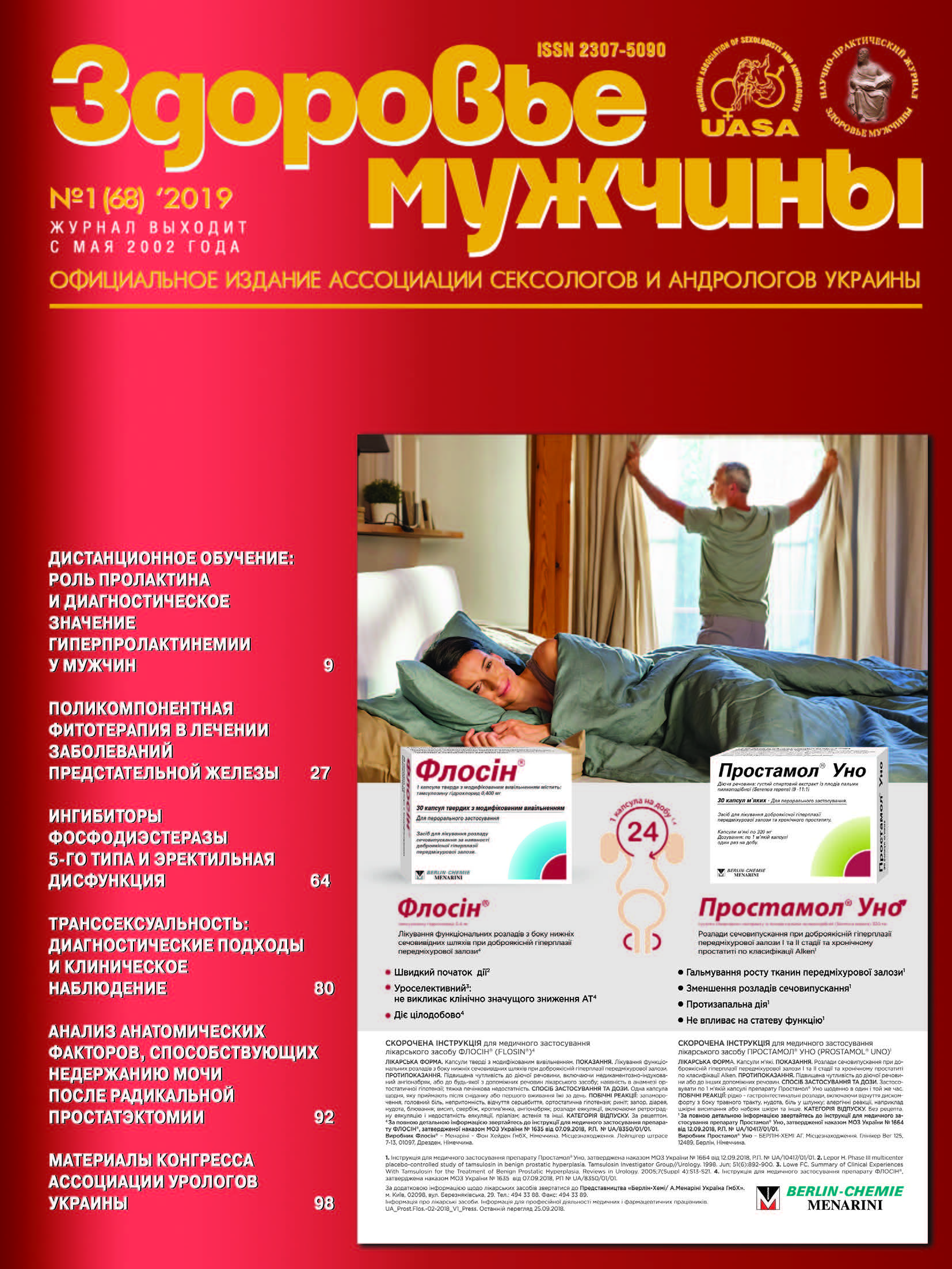Efficiency of Extracorporeal Shock-wave Lithotripsy in the Treatment of Urolithiasis
##plugins.themes.bootstrap3.article.main##
Abstract
Urolithiasis, according to the results of the analysis of Ukrainian and foreign literature, is one of the most urgent problems of urologists. The prevalence of GCC is 20% and, unfortunately, has a tendency to increase. Throughout the life of this pathology diagnosed in 8.8% of the adult population. In Ukraine, Urolithiasis ranks second after non-specific inflammatory diseases of the kidneys. The close attention of researchers to Urolithiasis is due to the lack of a clear cause of its occurrence today, developmental mechanisms, despite the numerous scientific theories that explain only some of the pathogenesis pathways of such a complex process as urolithiasis. In the treatment of Urolithiasis, undeniable progress has been made through the introduction of minimally invasive techniques, such as extracorporeal shock-wave lithotripsy (ESWL). This method is less traumatic, well tolerated by patients, allows it to be used in patients of all ages. ESWL is the method of choice if the size of the stone is up to 15–20mm. Only when ESWL is contraindicated or prognostically ineffective, alternative methods are used.
Objective: to study the effectiveness of the treatment of patients with ICD using the method ESWL.
Materials and methods. In the clinic of the State Institution “Institute of Urology of the National Academy of Medical Sciences of Ukraine”, 160 patients with calculi in the kidney and ureter were examined.
Results. In all patients, the result of treatment was positive, complications practically did not arise. The criterion of EHL efficiency is the complete fragmentation of the stone to the smallest particles capable of spontaneous discharge.
Conclusions. Conducting extracorporeal shock wave lithotripsy, taking into account size, structural density, location of calculus, impact on renal hemodynamics, allows you to choose the best way to generate a shock wave.##plugins.themes.bootstrap3.article.details##

This work is licensed under a Creative Commons Attribution 4.0 International License.
Authors retain the copyright and grant the journal the first publication of original scientific articles under the Creative Commons Attribution 4.0 International License, which allows others to distribute work with acknowledgment of authorship and first publication in this journal.
References
Аляев Ю.Г., Глыбочко П.З., Пушкарь Д.Ю. (2016). Урология. Российские клинические рекомендации. М.: ГЭОТАР-Медиа. 496 с.
Возианов А.Ф., Люлько А.В.(2001). Атлас: руководство по урологии в 3 т. Днепропетровск: РИА «Днепр-VAL», 195 с.
Дутов В.В., Галько А.А., Румянцев А.А. (2015). Особенности диагностики и лечения мочекаменной болезни в сочетании с инфравезикальной обструкцией у пациентов пожилого и старческого возраста. Медицинские аспекты здоровья мужчины, 3, 25-29.
Дзеранов Н.К., Яненко Э.К. (2004). Оперативное лечение коралловидного нефролитиаза. Урология и нефрология,1, 34-38.
Яненко Э.К., Меринов Д.С., Константинова О.В., Епишов В.А., Калиниченко Д.Н. (2012). Современные тенденции в эпидемиологии, диагностика и лечение мочекаменной болезни. Экспериментальная и клиническая урология, 3, 19-24.
Bahilo Mateu P., Budia Alba A., Liatsikos E., Trassierra Yilla M., Loper-Acon J.G., de Gurman Ordar A., Boronat Tormo F. (2017). Is extracorporeal shock wave lithotripsy a current treatment of urolithiasis? A systematic review. Astas.Urol. Esp. 2017;pii: SO210-4806(17)30024-4. Doi: 10.1016/j. acuro.2017.01.011.
Knoll T. (2010). Epidemiology, Pathogenesis and Pathophysiology of Urolithiasis. Eur. Urol.,9:802.6. Doi:10.1016/j.eusupp. 2010.11.006.
Matlaga B.R., Krambeck A.E., Lingeman J.E. (2016). Surgical Management of Upper Urinary Tract Calculi. In: Wein A.J., Karoussi L.R., Partin A.W., Peters C.A. Campbell-Walsh Urology. Eleventh Edition. Elsevier Inc./2016:1260-1287.
Romero V., Akpinar H., Assimos D.G.(2010). Kidney stones: A Global Picture of Prevalence, Incidence, and Associated Risk Factors. Rev. Urol. 2010, 12(2): 86-96.
Scales C.D., Smith A.C., Hanley J.M., Saigal C.S. (2012). Prevalence of kidney stones in the United States. Eur. Urol., 62(1):160-165. Doi: 10.1016/j.euroro.2012.03.052.
Turk C., Petrik A., Sarica K., Skolarikos A., Straub M., Seitz C.(2016). EAU Guldelines of Urolithiasis. European Association of Urology, 2016.
Yasui T., Ando K., Okada A., Tozava K., Iguchi M., Kohni K. (2012). Epidemiology of urolithiasis for improving clinical practic. Hinyokika Kiyo. 58(12):697-701.





